
Wichita Mountains Wildlife Refuge: A Natural Haven in Oklahoma
Discover the untouched beauty and diverse wildlife of the Wichita Mountains Wildlife Refuge, a serene haven nestled in the heart of Oklahoma’s rugged landscape.
Nestled in southwestern Oklahoma, the Wichita Mountains Wildlife Refuge offers an extraordinary blend of natural beauty and diverse wildlife. Spanning over 59,000 acres, this sanctuary is a paradise for nature lovers and outdoor enthusiasts alike. Here, visitors are treated to scenic views of rugged granite hills, serene lakes, and sprawling prairie landscapes. The refuge is home to a rich array of wildlife, including bison, elk, deer, and over 240 species of birds. Whether you're a birdwatcher, a hiker, or a photographer, you'll find plenty of opportunities to connect with nature. Explore the refuge's numerous trails, where you might spot a herd of bison grazing or catch a glimpse of a prairie dog colony. In addition to its natural wonders, the Wichita Mountains Wildlife Refuge boasts a variety of recreational activities. Fishing, camping, and rock climbing are popular pastimes, and the picturesque Mount Scott offers breathtaking panoramic views. The Visitor Center provides educational exhibits and information about the refuge’s history and ecosystem, making it a great starting point for your adventure.
Local tips in Wichita Mountains Wildlife Refuge
- Visit early in the morning or late in the afternoon for the best chance to see wildlife.
- Bring plenty of water and sun protection, especially during the hot summer months.
- Stop by the Visitor Center to get maps and learn about the best spots to explore.
- Wear sturdy shoes if you plan to hike; some trails can be rocky and uneven.
- Don’t forget your binoculars for birdwatching and spotting distant wildlife.
Wichita Mountains Wildlife Refuge: A Natural Haven in Oklahoma
Nestled in southwestern Oklahoma, the Wichita Mountains Wildlife Refuge offers an extraordinary blend of natural beauty and diverse wildlife. Spanning over 59,000 acres, this sanctuary is a paradise for nature lovers and outdoor enthusiasts alike. Here, visitors are treated to scenic views of rugged granite hills, serene lakes, and sprawling prairie landscapes. The refuge is home to a rich array of wildlife, including bison, elk, deer, and over 240 species of birds. Whether you're a birdwatcher, a hiker, or a photographer, you'll find plenty of opportunities to connect with nature. Explore the refuge's numerous trails, where you might spot a herd of bison grazing or catch a glimpse of a prairie dog colony. In addition to its natural wonders, the Wichita Mountains Wildlife Refuge boasts a variety of recreational activities. Fishing, camping, and rock climbing are popular pastimes, and the picturesque Mount Scott offers breathtaking panoramic views. The Visitor Center provides educational exhibits and information about the refuge’s history and ecosystem, making it a great starting point for your adventure.
When is the best time to go to Wichita Mountains Wildlife Refuge?
Unmissable attractions to see
The Holy City of the Wichitas
Explore the Holy City of the Wichitas, a historic site in Oklahoma that offers stunning architecture and a rich cultural experience in a tranquil setting.

Medicine Park Aquarium and Natural Sciences Center
Explore vibrant aquatic life and discover the wonders of nature at Medicine Park Aquarium and Natural Sciences Center, a must-visit tourist attraction in Oklahoma.

Lake Jed Johnson Tower
Experience the tranquil beauty of Lake Jed Johnson Tower in Lawton, Oklahoma, a perfect destination for nature lovers and outdoor enthusiasts.

Crab Eyes
Explore Crab Eyes in Oklahoma, a captivating tourist attraction with unique rock formations set in a serene landscape, perfect for nature lovers.

Window of the Wichitas
Explore the breathtaking Window of the Wichitas, a hidden gem in Oklahoma renowned for its stunning landscapes and serene natural beauty.

Refuge Headquarters
Explore the tranquil landscapes and diverse wildlife at Refuge Headquarters, a must-visit park in Indiahoma, Oklahoma for nature lovers.

The Pear and Apple
Explore the enchanting beauty of The Pear and Apple in Oklahoma, a must-visit destination for nature lovers and families seeking a serene escape.

Markets, malls and hidden boutiques
Wichita Mountains National Wildlife Refuge
Discover the stunning landscapes and diverse wildlife at Wichita Mountains National Wildlife Refuge, a true gem in Oklahoma's wilderness.
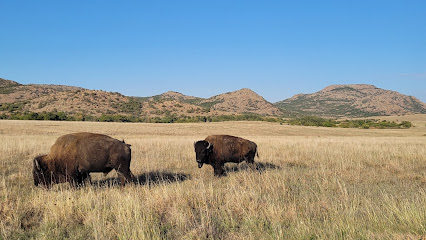
The Holy City of the Wichitas
Discover the tranquility and historical significance of The Holy City of the Wichitas, a spiritual haven nestled in Oklahoma's stunning landscapes.

Medicine Park Aquarium and Natural Sciences Center
Explore the captivating Medicine Park Aquarium and Natural Sciences Center, where education meets adventure in Oklahoma's stunning landscapes.

Wichita Mountains Wildlife Refuge Visitor Center
Discover the Wichita Mountains Wildlife Refuge Visitor Center, a gateway to Oklahoma’s breathtaking landscapes and diverse wildlife experiences.
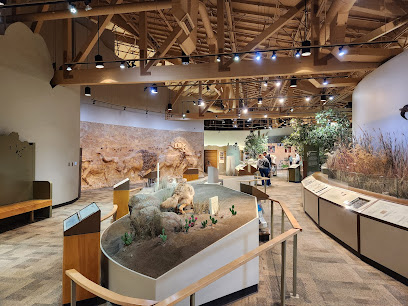
Mary's Curious Goods
Explore the charm of Lawton's local culture at Mary's Curious Goods, a unique gift shop offering handcrafted treasures and quirky souvenirs.

Wichita Mountains
Explore the breathtaking Wichita Mountains, a natural paradise in Oklahoma featuring stunning views, diverse wildlife, and endless outdoor activities.
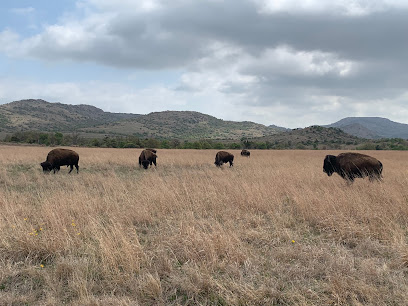
Discovery Outpost
Explore Discovery Outpost in Medicine Park, a joyful toy and book store offering unique gifts and educational fun for all ages.

Comanche Shirt Company
Explore the charm of Medicine Park with unique gifts and souvenirs at Comanche Shirt Company, showcasing local culture and stylish apparel.

White Buffalo Trading Post
Explore the best of local crafts and souvenirs at White Buffalo Trading Post in Medicine Park, Oklahoma - a treasure trove for unique finds.

Happy Hollow
Explore Happy Hollow in Medicine Park for unique souvenirs that capture the essence of Oklahoma's culture and creativity.

1908 Emporium
Explore 1908 Emporium: Your destination for unique gifts and souvenirs in Medicine Park, Oklahoma, capturing local charm and culture.

Friends of the Wichitas Nature Store
Discover unique nature-themed gifts and local artisan crafts at Friends of the Wichitas Nature Store in stunning Wichita Mountains Wildlife Refuge.

Laughing Lizard Trading Post
Explore the artful charm of Laughing Lizard Trading Post, a delightful gift shop showcasing local craftsmanship in Medicine Park, Oklahoma.
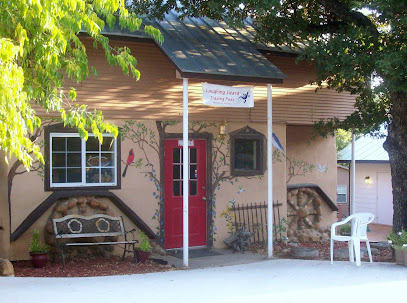
Trading Post Souvenir & Gift Shop
Explore the Trading Post Souvenir & Gift Shop for unique, locally crafted gifts and memorabilia that capture the essence of Oklahoma.

Essential bars & hidden hideouts
Wichita Mountains National Wildlife Refuge
Explore the breathtaking beauty of Wichita Mountains National Wildlife Refuge, a haven for wildlife and outdoor enthusiasts in Oklahoma.

The Old Plantation Restaurant
Discover the unique blend of history and flavor at The Old Plantation Restaurant in Medicine Park, Oklahoma, where American cuisine meets rustic charm.

Meers Store and Restaurant
Discover the flavors of Meers at Meers Store and Restaurant, where legendary burgers and local charm await every visitor.

Ann's Country Kitchen
Discover the heart of American comfort food at Ann's Country Kitchen, a cozy diner in Lawton, Oklahoma, perfect for breakfast and lunch enthusiasts.

Riverside Cafe
Experience the perfect blend of delicious food and breathtaking views at Riverside Cafe in Medicine Park, Oklahoma.

Wichita Mountains Wildlife Refuge Visitor Center
Explore the breathtaking Wichita Mountains Wildlife Refuge Visitor Center, a haven for nature lovers and wildlife enthusiasts in Oklahoma.
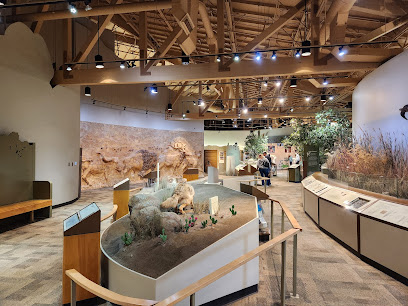
Sonic Drive-In
Indulge in classic American flavors at Sonic Drive-In, where nostalgic dining meets delicious fast food in Cache, Oklahoma.

Wichita Mountains
Discover the breathtaking beauty of the Wichita Mountains, a natural wonder in Oklahoma offering adventure and tranquility.
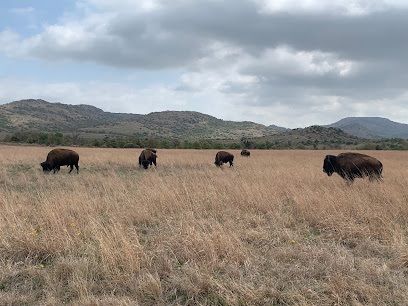
Small Mountain Street Tacos
Discover the vibrant flavors of Small Mountain Street Tacos in Medicine Park, where every taco tells a story of Oklahoma's culinary heritage.

Park Tavern
Discover the lively spirit of Medicine Park at Park Tavern, where delightful drinks and a welcoming atmosphere await.

Joe Mountain Breakfast Bar
Experience the best of American breakfast at Joe Mountain Breakfast Bar in Medicine Park, where delicious flavors meet warm hospitality.

Nice Ice Baby Medicine Park
Discover the vibrant essence of Medicine Park at Nice Ice Baby, where unique cocktails and a lively atmosphere await every visitor.

C W Scooters
Experience the vibrant nightlife at C W Scooters, a top bar and nightclub in Lawton, Oklahoma, known for great drinks and a lively atmosphere.

BULLPEN
Experience the vibrant nightlife of Lawton at The Bullpen, where local spirit meets delicious drinks and unforgettable entertainment.

Trading Post Restaurant
Discover the heart of Cache, Oklahoma, at Trading Post Restaurant, where hearty American classics and warm hospitality await your visit.

Local Phrases about Wichita Mountains Wildlife Refuge
-
- HelloHowdy
[hah-dee] - GoodbyeSee ya
[see yuh] - YesYep
[yep] - NoNah
[nah] - Please/You're welcomePlease/No worries
[pleez/no wor-reez] - Thank youThanks
[thanks] - Excuse me/SorryPardon me/My bad
[par-dun mee/my bad] - How are you?Howdy
[hah-dee] - Fine. And you?Jist fine. How 'bout you?
[jist fine. how 'bout yuh] - Do you speak English?Ya speak English?
[ya speak Ing-lish] - I don't understandI ain't catchin' on
[I aint kach-in on]
- HelloHowdy
-
- I'd like to see the menu, pleaseCan I see the grub list, please
[can I see the grub list, please] - I don't eat meatI ain't a meat eater
[I aint uh meet eater] - Cheers!Bottoms up!
[bot-ums up] - I would like to pay, pleaseI'm fixin' to settle up
[I'm fix-in to set-ul up]
- I'd like to see the menu, pleaseCan I see the grub list, please
-
- Help!Heeelp!
[hee-elp] - Go away!Git!
[git] - Call the Police!Ring up the law!
[ring up the law] - Call a doctor!Get a doc!
[get a doc] - I'm lostI'm turned around
[I'm turned around] - I'm illI'm feelin' poorly
[I'm feelin' poorly]
- Help!Heeelp!
-
- I'd like to buy...I reckon I'll take...
[I reckon I'll take] - I'm just lookingI'm just browsin'
[I'm just brows-in] - How much is it?How much fer that?
[how much fur that] - That's too expensiveThat's pricey
[that's pr-eye-see] - Can you lower the price?Can ya do better on the tag?
[can ya do bet-ter on the tag]
- I'd like to buy...I reckon I'll take...
-
- What time is it?What's the time?
[what's the time] - It's one o'clockIt's one
[It's one] - Half past (10)Half past ten
[half past ten] - MorningMornin'
[mornin'] - AfternoonAfternoon
[afternoon] - EveningEvenin'
[evenin'] - YesterdayYest'day
[yest'day] - TodayToday
[today] - TomorrowTomorra
[tomorra] - 1One
[won] - 2Two
[too] - 3Three
[three] - 4Four
[four] - 5Five
[five] - 6Six
[six] - 7Seven
[seven] - 8Eight
[eight] - 9Nine
[nine] - 10Ten
[ten]
- What time is it?What's the time?
-
- Where's a/the...?Where's the...
[where's the] - What's the address?What's the addy?
[what's the addy] - Can you show me (on the map)?Can ya point it out (on the map)?
[can ya point it out (on the map)] - When's the next (bus)?When's the next (bus)?
[when's the next (bus)] - A ticket (to ....)A ticket (to ....)
[a ticket (to)]
- Where's a/the...?Where's the...
History of Wichita Mountains Wildlife Refuge
-
Long before European settlers arrived, the Wichita Mountains were home to various tribes, including the Comanche, Kiowa, and Apache. These indigenous people hunted bison, deer, and other game while gathering edible plants from the rich, diverse landscape. The mountains held spiritual significance and were often regarded as sacred ground.
-
In the early 19th century, European explorers such as Francisco Vásquez de Coronado traversed the region in search of mythical cities of gold. By the mid-1800s, the U.S. government had established treaties with the native tribes, leading to increased settlement by pioneers. The rugged terrain of the Wichita Mountains posed challenges but also offered opportunities for farming and ranching.
-
In 1869, Fort Sill was established near the Wichita Mountains by General Philip Sheridan as a base for the U.S. Army during the Indian Wars. The fort played a significant role in the military campaigns against the Plains tribes and later served as a training ground during World War I. Today, Fort Sill remains an active military installation and houses the U.S. Army Field Artillery School.
-
The Wichita Mountains Wildlife Refuge was established in 1901, making it one of the first wildlife refuges in the United States. The refuge was created to protect the dwindling populations of bison, elk, and other species that had been decimated by overhunting and habitat loss. Today, the refuge spans over 59,000 acres and is home to a diverse array of flora and fauna.
-
One of the most significant conservation efforts in the Wichita Mountains Wildlife Refuge was the reintroduction of the American bison. In 1907, fifteen bison from the New York Zoological Society were brought to the refuge to establish a breeding population. This marked the beginning of successful bison conservation efforts, and the refuge now hosts a thriving bison herd.
-
During the Great Depression, the Civilian Conservation Corps (CCC) played a pivotal role in developing the infrastructure of the Wichita Mountains Wildlife Refuge. From 1933 to 1942, CCC workers built roads, trails, dams, and other facilities that are still in use today. Their efforts not only provided much-needed employment but also enhanced the accessibility and preservation of the refuge.
-
The Wichita Mountains Wildlife Refuge has long been a destination for outdoor enthusiasts and cultural events. Visitors can explore a variety of recreational activities, including hiking, rock climbing, and wildlife observation. The refuge also hosts traditional Native American ceremonies, educational programs, and guided tours, offering insights into the region's rich cultural heritage.
Wichita Mountains Wildlife Refuge Essentials
-
Wichita Mountains Wildlife Refuge is located in southwestern Oklahoma. The nearest major airport is Will Rogers World Airport in Oklahoma City, approximately 90 miles away. From the airport, you can rent a car and drive to the refuge, which takes about 1.5 to 2 hours via I-44 W. Alternatively, you can take a bus from Oklahoma City to Lawton, and then a taxi or rideshare to the refuge.
-
The most convenient way to explore Wichita Mountains Wildlife Refuge is by car. There are several car rental agencies in Oklahoma City and Lawton. Within the refuge, driving is essential to reach various trails, picnic areas, and attractions. There are no public transportation options within the refuge itself, so having your own vehicle is highly recommended.
-
The official currency is the US Dollar (USD). Credit cards are widely accepted at most facilities, including visitor centers, shops, and nearby restaurants. ATMs are available in the nearby towns of Lawton and Cache. It is advisable to carry some cash for smaller establishments and entrance fees that may not accept cards.
-
Wichita Mountains Wildlife Refuge is generally a safe destination. However, standard precautions should still be taken. Petty theft can occur, so keep valuables secured and out of sight. Stick to well-marked trails and be cautious of wildlife. Avoid hiking alone and inform someone of your plans. There are no high-crime areas specifically targeting tourists, but always remain vigilant.
-
In case of emergency, dial 911 for immediate assistance. The refuge has park rangers who can assist with emergencies. The nearest hospital is in Lawton, approximately 20 miles away. It is advisable to carry a first aid kit and any necessary medications. Travel insurance that covers medical emergencies is recommended.
-
Fashion: Do wear comfortable outdoor clothing and sturdy hiking boots. Don't wear flip-flops or open-toed shoes on trails. Religion: The refuge is secular, but do respect any cultural or spiritual sites you may encounter. Public Transport: There is no public transport within the refuge; do plan accordingly. Greetings: A friendly wave or nod is common among visitors. Eating & Drinking: Do bring your own food and water, as facilities are limited. Don't leave trash behind; use designated bins.
-
To experience Wichita Mountains Wildlife Refuge like a local, start your visit early in the morning to avoid crowds and catch the best wildlife sightings. Visit the Holy City of the Wichitas, a unique historical site within the refuge. Check out the Visitor Center for maps and educational exhibits. Don't miss the scenic drive up to the top of Mount Scott for panoramic views. Engage with park rangers and volunteers; they often have insider tips on the best trails and wildlife viewing spots.
Nearby Cities to Wichita Mountains Wildlife Refuge
-
Things To Do in Norman
-
Things To Do in Moore
-
Things To Do in Oklahoma City
-
Things To Do in Edmond
-
Things To Do in Enid
-
Things To Do in Stillwater
-
Things To Do in Fort Worth
-
Things To Do in Plano
-
Things To Do in Arlington
-
Things To Do in Irving
-
Things To Do in Abilene
-
Things To Do in Dallas
-
Things To Do in Tulsa
-
Things To Do in Amarillo
-
Things To Do in Broken Arrow











